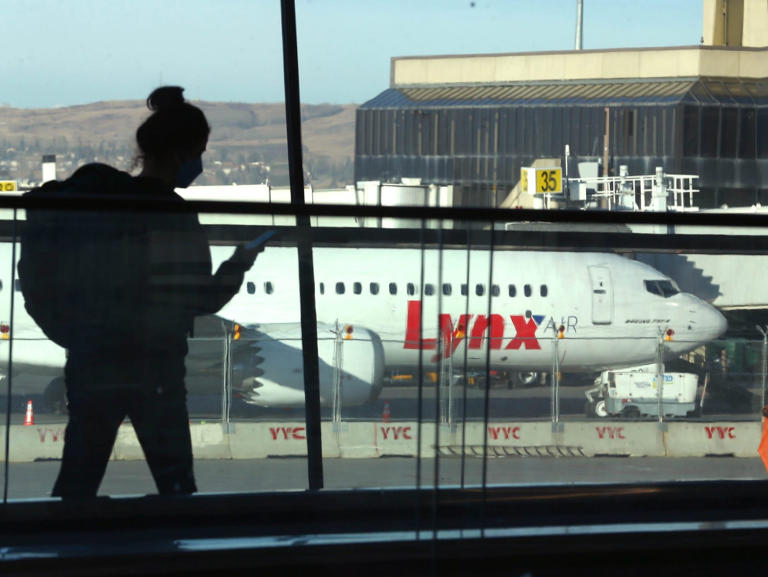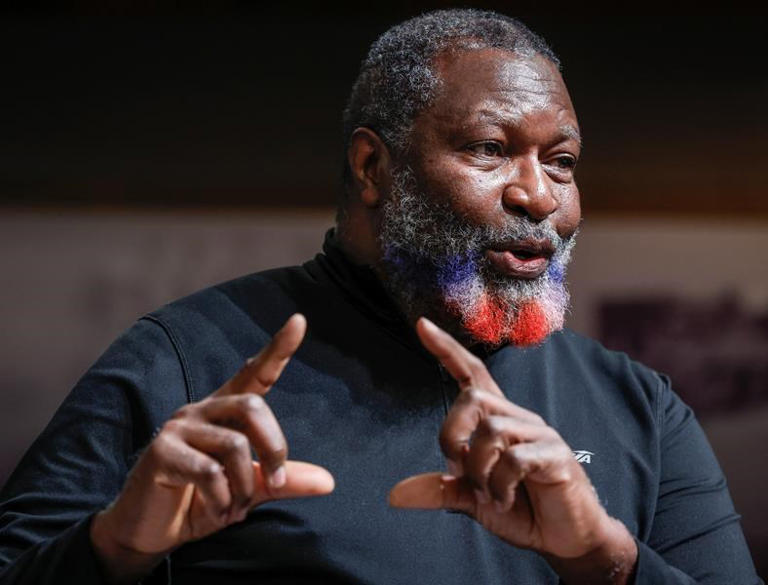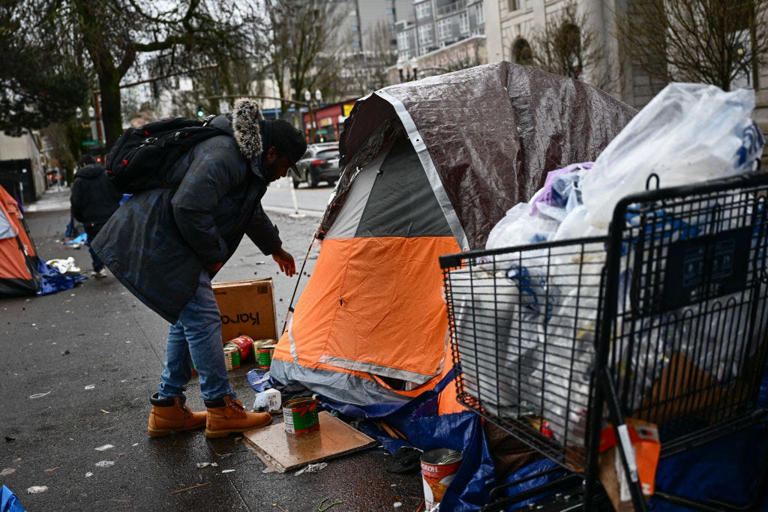Online safety a key part of Ottawa's new gender plan — and to world peace, says envoy
OTTAWA — Authoritarian countries are leveraging social media to set back progress for women worldwide, a Canadian special envoy says, as Ottawa refreshes its cross-government gender policy.
Canada's ambassador for women, peace and security, Jacqueline O'Neill, says these threats require supporters of gender equality around the world to work together.
Western countries must help buck a global trend of strongmen leaders seeking to prevent women from having meaningful roles in public life, she said in a recent interview.
"Authoritarian governments are very much cracking down on space for communities to organize, for the media to have free speech and for women's rights activists to pursue their work," said O'Neill, who advocates for women both abroad and at home.
She pointed to research such as that of Harvard University professor Erica Chenoweth, who has documented how resistance movements are more successful when they integrate women in leadership and frontline roles.
One way that governments are trying to stifle such opposition is by using social media to support, spread and even fund a narrative that women's rights are a foreign import meant to challenge traditional values, O'Neill said.
She calls it technology facilitated gender-based violence.
Women in Canada are no strangers to online harassment.
Gov. Gen. Mary Simon convened female politicians, activists and journalists last year to strategize on how to deal with vile online abuse.
And Global Affairs Canada has started adding security expenses to grants it gives to human-rights activists abroad, O'Neill said, for everything from physical office locks to training on digital hygiene so people can protect themselves online.
The department says Liberal ministers approved the third national action plan on women, peace and security in December.
The recently approved policy is meant to provide guidance across the government — from its approach to diplomatic summits to how it conducts domestic policing and welfare programs.
Though it has not been released publicly and O'Neill said she can't share the details, she suggested it will address online harms.
She signalled it will also include considerations around how climate can affect women's security.
"We're seeing a lot of armed groups around the world taking advantage of climate disruptions to both recruit women into their forces (and) to abduct girls to be, effectively, sex slaves," she said.
She noted that natural disasters and other climate emergencies, such as drought, can cause families to pull their girls out of school so they can work or be part of forced marriages.
As part of her role, O'Neill was in East Africa last month taking stock of the situation for women in countries that recently experienced conflict but have since lost global attention.
"We wanted to convey that they're equally important to us now, and that we're equally engaged," she said.
There, too, she heard activists speak to an increasing chill on their freedom of speech.
O'Neill visited the Tigray region in Ethiopia, where a terrible war ended in late 2022. Hundreds of thousands of people died and there were widespread accounts of rape.
There, she said she met with women who were receiving help because of Canadian aid as they recovered from sexual violence perpetrated by militants.
"They did things like inserting objects in women's wombs that would prevent them from ever having babies again," she described.
Many survivors said they’d been knocked out during these attacks, and only learned what happened years later when an infection emerged or they couldn't get pregnant, and medical tests found evidence of foreign objects such as nails or rocks.
"There was an ethnic dimension to this in wanting them to never reproduce," said O'Neill, emphasizing that systemic acts such as those go beyond domestic or gender-based violence.
"It’s equally horrific, but it also requires a different kind of response, and it requires justice on a different level."
The Canadian envoy said she saw a concerning lack of services to reintegrate women in the country — meaning efforts to allow women to resume employment, including in politics, rather than being left to provide basic services and support to their communities in the wake of war.
In Mozambique, O'Neill saw that reintegration has been a major part of the effort to help reach a lasting peace following a long civil war.
The success of the country's 2019 peace treaty depends in part on making sure female combatants are included in reintegration efforts, she said.
In Kenya, O'Neill visited a training centre for peacekeepers that tries to reconcile the roles of police, military and civilians in conflict areas.
She said the curriculum included information about how to find signs of sexual violence on a systemic level.
The training might help Kenyan police officers on a planned deployment to Haiti, O'Neill said, as part of a mission that aims to stabilize the Caribbean country for which Canada announced a $80.5-million contribution on Thursday.
O'Neill is not the only envoy in the international community with a title focused on women, peace and security.
But the Canadian version of that role is unique, O'Neill said.
In addition to advocating for women abroad and telling their stories to Canadians, she is also tasked with seeing what Canada can learn from how countries rich and poor are making gains for women.
"Every country in the world has something to share about what they're doing," O'Neill said — and "so many things to learn."
This report by The Canadian Press was first published Feb. 25, 2024.
Dylan Robertson, The Canadian Press
Ottawa to create regulator to hold online platforms accountable for harmful content: sources
Story by Naama Weingarten •

Sources confirm a new regulator to hold tech giants accountable for harmful online content is part of impending federal legislation.© Manan Vatsyayana/AFP/Getty Images
The Online Harms Act, expected to be introduced by the federal government on Monday, will include the creation of a new regulator that would hold online platforms accountable for harmful content they host, CBC News has confirmed.
The new regulatory body is expected to oversee a digital safety office with the mandate of reducing online harm and will be separate from the Canadian Radio-television and Telecommunications Commission (CRTC), sources say
Two sources, including one with the federal government, with knowledge of Monday's legislation confirmed the creation of the office, saying it will require Canadian websites to uphold a "duty to reduce harm" and comply with federal law. CBC News is not identifying the sources because they were not authorized to speak publicly on the matter before the bill is tabled in Parliament.
It's not clear whether the regulator will have power only over online platforms hosted in Canada or over all websites accessible by Canadians.
The Canadian Press first reported that a new regulator would be part of forthcoming online-harms legislation. The government is also planning to establish a new ombudsperson whose job would be to field concerns from members of the public who encounter problematic material or scenarios online, CP previously reported.
Sources say some components of the new bill will be modelled on the European Union's Digital Services Act. According to the European Commission, its act "regulates online intermediaries and platforms such as marketplaces, social networks, content-sharing platforms, app stores, and online travel and accommodation platforms.
In an interview on Sunday, Michael Geist, Canada Research Chair in Internet and e-Commerce Law at the University of Ottawa, told CBC News there's a need for some kind of governance structure to tackle harmful online content, but "the devil will be in the details" of what regulations will entail.
"The government already saddled the CRTC with many issues that fall beyond its expertise," he said. "It's hard to judge the new governance structure until we see it, it's actually a bit of a wild card."
The government's proposed legislation will focus on protecting children and youth from the dangers of the internet, according to Prime Minister Justin Trudeau.
"We need to do a better job as a society of protecting our kids online the way we protect them in schoolyards, in our communities, in our homes across the country," Trudeau told reporters in Edmonton on Wednesday.
Privacy concerns around age verification
Monday's legislation by the government is expected to present an alternative to Bill S-210, proposed by Independent Sen. Julie Miville-Dechêne. That bill requires Canadians to verify their age to access porn online, with the establishment of a digital ID verification system as a potential method.
A House of Commons committee is set to study S-210, as the owners of Canadian adult website Pornhub said they won't rule out blocking Canadians from the site if measures to verify the age of users are passed.
"We will never, ever take the private identifying information of our users," Solomon Friedman, a partner and vice-president of compliance at Ethical Capital Partners, which owns Pornhub's parent company, said in a previous interview.
Trudeau said his Liberal government is opposed to age-verification systems for porn websites, an option endorsed by Conservative Leader Pierre Poilievre last week. Poilievre's office later clarified that the Conservatives oppose any kind of digital ID as a method of doing so.
When age-verification laws passed in Utah last summer, Pornhub blocked access to its site, and demand for Virtual Private Networks surged by 847 per cent, according to Top 10 VPN, which analyzes spikes in VPN demand. Montana, one of the states where age-verification laws passed last year, saw a 482 per cent increase in demand for VPN, which is used to hide people's location online.
The possibility of age-verification systems rang alarm bells among privacy experts, who worry about the risks of Canadians sharing their personal information with external sources.
The regulations echo the online harms bill that Trudeau's government proposed ahead of the 2021 election. It would have created a digital safety commissioner as a watchdog for social media companies, required to weed out child pornography and other harmful content.
Public consultations for these rules were met with strong criticism from privacy experts and civil liberties groups, who said a proposed measure giving companies 24 hours to remove flagged harmful content would encourage platforms to be overly cautious and result in suppression of free speech. The bill ultimately died on the order paper when the Liberals called an election.
Trudeau then said he would table an online harms bill within 100 days after the election, a years-old promise that faced mounting pressure with the rise of online hate speech and multiple reports of teenagers who died by suicide after being victims of online sextortion.






















